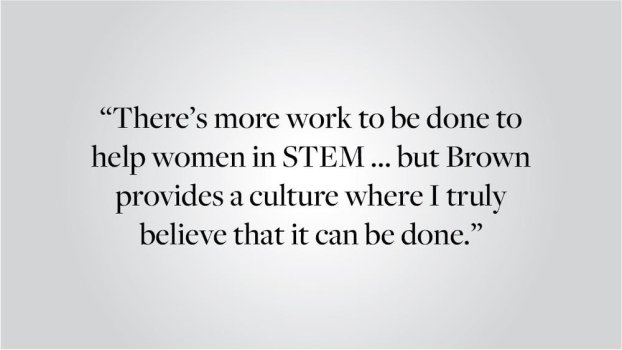After a year of online school, I was stunned when I walked into the first class of my sophomore year, an upper-level computer science lecture of 70 students. I couldn’t see a single other woman in the classroom. I scanned the room a few times, then felt relief as I found at least a couple of female students. Yet even then, I was forced to lose the blissful ignorance that Zoom had allowed. My classmates were no longer muted and faceless names on a participants list; now, they were tangible people, and I was so obviously a minority among them.
Experiences like these are extremely disconcerting, but unfortunately, they are not uncommon. Tech has seen industry-wide gender disparities since the 1980s, both in terms of women’s participation in the workforce and their compensation. The challenges that female STEM students face at Brown aren’t unique to this institution, but Brown has made valuable efforts to support its female students amid the sometimes overly competitive culture within STEM fields. Maybe women pursuing STEM degrees won’t be able to fully escape systemic disparities at Brown — I’m certainly not the first to wish for fewer gender-skewed classes — but the University deserves credit for its efforts at the departmental and institutional level to foster an environment that empowers women in the face of these challenges.
The positive results of the atmosphere Brown has created for women in STEM are self-evident: The percentage of CS undergraduates at Brown who are female in recent years (39%) is almost twice the national average (20%). Most comparable schools — including Stanford University where 34% of concentrators were women in 2020, Northeastern University where 31% of incoming undergraduates in the department in 2019 were women and Penn where 25% of CS undergraduate degrees were awarded to women as of 2014 — seem to trail slightly behind Brown in this metric. Brown’s improving numbers are contributed to by institutional leaders and alumni’s efforts to work with STEM departments to organize targeted initiatives and campaigns for gender parity.
Continue reading: https://www.browndailyherald.com/article/2022/04/bahl-24-keeping-women-in-stem-in-stem
Experiences like these are extremely disconcerting, but unfortunately, they are not uncommon. Tech has seen industry-wide gender disparities since the 1980s, both in terms of women’s participation in the workforce and their compensation. The challenges that female STEM students face at Brown aren’t unique to this institution, but Brown has made valuable efforts to support its female students amid the sometimes overly competitive culture within STEM fields. Maybe women pursuing STEM degrees won’t be able to fully escape systemic disparities at Brown — I’m certainly not the first to wish for fewer gender-skewed classes — but the University deserves credit for its efforts at the departmental and institutional level to foster an environment that empowers women in the face of these challenges.
The positive results of the atmosphere Brown has created for women in STEM are self-evident: The percentage of CS undergraduates at Brown who are female in recent years (39%) is almost twice the national average (20%). Most comparable schools — including Stanford University where 34% of concentrators were women in 2020, Northeastern University where 31% of incoming undergraduates in the department in 2019 were women and Penn where 25% of CS undergraduate degrees were awarded to women as of 2014 — seem to trail slightly behind Brown in this metric. Brown’s improving numbers are contributed to by institutional leaders and alumni’s efforts to work with STEM departments to organize targeted initiatives and campaigns for gender parity.
Continue reading: https://www.browndailyherald.com/article/2022/04/bahl-24-keeping-women-in-stem-in-stem

